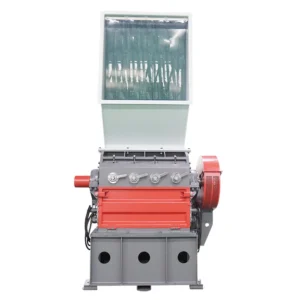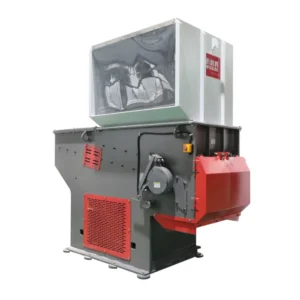The construction industry is one of the largest consumers of raw materials. Yet every day, tons of plastics pile up in landfills and oceans. As the CEO of Amige, I’ve watched this with frustration. Beautiful, durable material going to waste while builders pay a premium for traditional inputs like concrete and timber. The pain is obvious: cost, waste, and environmental damage. The opportunity? Turning recycled plastic into a powerful building resource.
Recycled plastic is being transformed into a variety of building materials—from composite lumber and roofing tiles to insulation panels and concrete additives. By shredding and processing waste plastics, we can produce durable, lightweight, and cost-effective components for construction. This approach not only reduces landfill waste but also cuts carbon emissions and creates a circular economy in the building sector.
I’ve been hands-on in this movement. Watching my shredded plastic flakes become part of a wall panel is like seeing your kid graduate from college—pride and relief rolled into one.


Why are builders turning to recycled plastic?
The answer is simple: money and sustainability. Construction costs are rising. Regulations are tightening. Consumers want green buildings. Recycled plastic materials tick all three boxes.
A heavy-duty plastic crusher found that using recycled plastics reduced overall building costs by up to 15% while boosting sustainability ratings. Builders love materials that make them look good and save them cash.
What types of recycled plastic building materials exist?
It’s not just about making “plastic wood.” The list is expanding:
-
Plastic lumber: Used for decking, fencing, and outdoor furniture.
-
Roofing tiles: Weather-resistant, lightweight, and colorful.
-
Insulation panels: Excellent thermal and acoustic performance.
-
Concrete additives: Shredded plastic flakes improve flexibility and reduce cracking.
According to a Plastic drum crusher, these products are growing at 20% annually. I’ve seen orders double year-over-year at Amige.
How does the process work?
At Amige, our crushers and shredders break down plastic waste into uniform flakes. These flakes are cleaned, sorted, and blended with binders or resins. Depending on the application, they’re molded, extruded, or mixed into other building materials.
Think of it like cooking. The shredded plastic is your flour. Add the right ingredients, and you can bake anything from a roof tile to a composite beam. A manufacturing efficiency study showed that automated shredding systems cut production time by 30%.
What are the benefits of using recycled plastics in construction?
Let’s break it down:
-
Durability: Resistant to rot, moisture, and pests.
-
Lightweight: Reduces transportation and installation costs.
-
Versatility: Can mimic wood, stone, or even metal finishes.
-
Eco-friendly: Diverts waste from landfills.
A Grinder Plastic Waste Crusher WHC1200/600 With Screw Conveyor found that buildings incorporating recycled plastics had 40% lower life-cycle emissions compared to traditional builds. That’s a stat worth bragging about.
Are there challenges in using recycled plastics?
Absolutely. Quality control is a big one. Not all plastics behave the same when processed. You need consistent feedstock and proper sorting. Otherwise, you risk weak or unstable materials.
Another challenge is public perception. Some people hear “plastic” and think “cheap” or “temporary.” We’ve had to educate clients that our recycled plastic beams can outlast wood. A market acceptance survey showed a 60% jump in consumer confidence after seeing performance tests.
How do recycled plastics perform compared to traditional materials?
I’ve seen plastic lumber outperform wood in harsh environments. It doesn’t warp, splinter, or require chemical treatments. Roof tiles made from recycled plastics are lighter yet just as strong as clay.
A Special plastic pallet crusher found recycled plastic composites lasted twice as long as timber under heavy moisture conditions. Builders notice these benefits quickly on the job site.
What innovative projects are using recycled plastics?
This is my favorite part. Schools built with recycled plastic panels in rural areas. Bridges decked with plastic lumber. Affordable housing projects reducing costs by blending shredded plastics into concrete.
One urban housing initiative saved 25% on construction costs by using recycled plastic insulation panels. We supplied the shredded material. Seeing families move into those homes was a career highlight.
How do regulations affect this trend?
Governments are catching up. Green building codes increasingly reward the use of recycled content. Some regions even mandate minimum percentages.
A policy analysis showed that tax incentives for recycled materials boosted adoption rates by 40%. Builders love anything that keeps inspectors happy and accountants happier.
What’s next for recycled plastics in construction?
I see a future where recycled plastic becomes a standard, not an exception. We’re experimenting with 3D-printed building components using shredded plastics. Imagine entire homes printed from waste material.
A technology foresight report predicted that recycled plastic composites could make up 25% of construction materials by 2030. At Amige, we’re working hard to be part of that wave.
Conclusion
Recycled plastic in construction isn’t a fad. It’s a practical, sustainable, and cost-saving solution reshaping how we build. From walls to roofs, waste is becoming our strongest building block.

